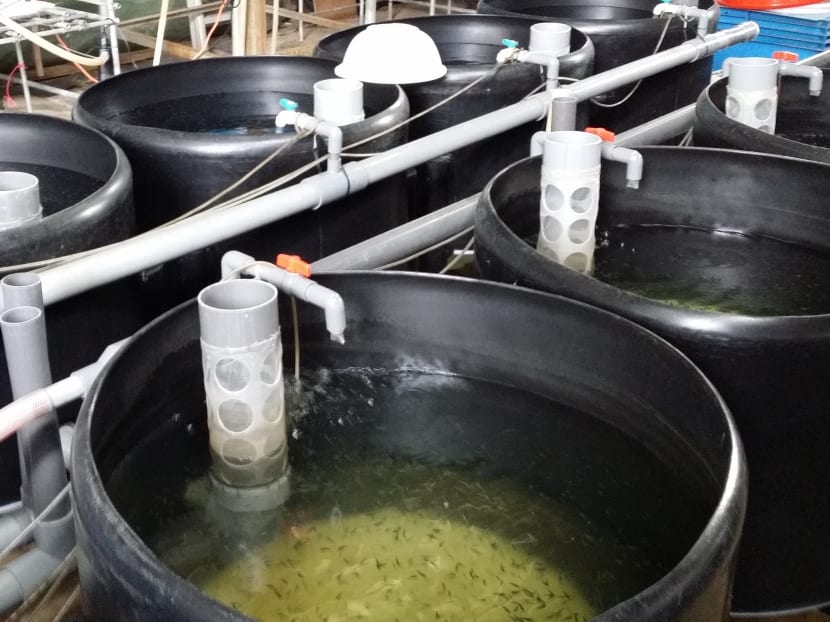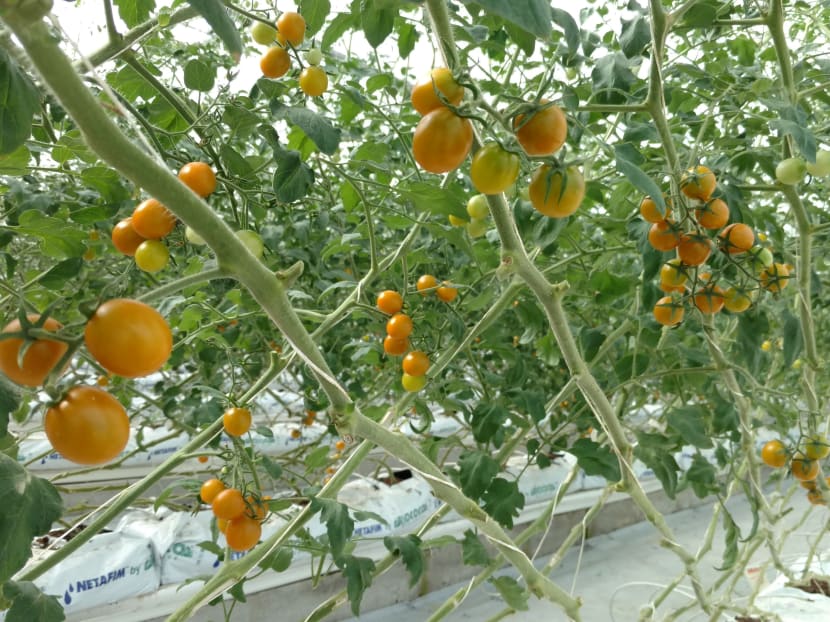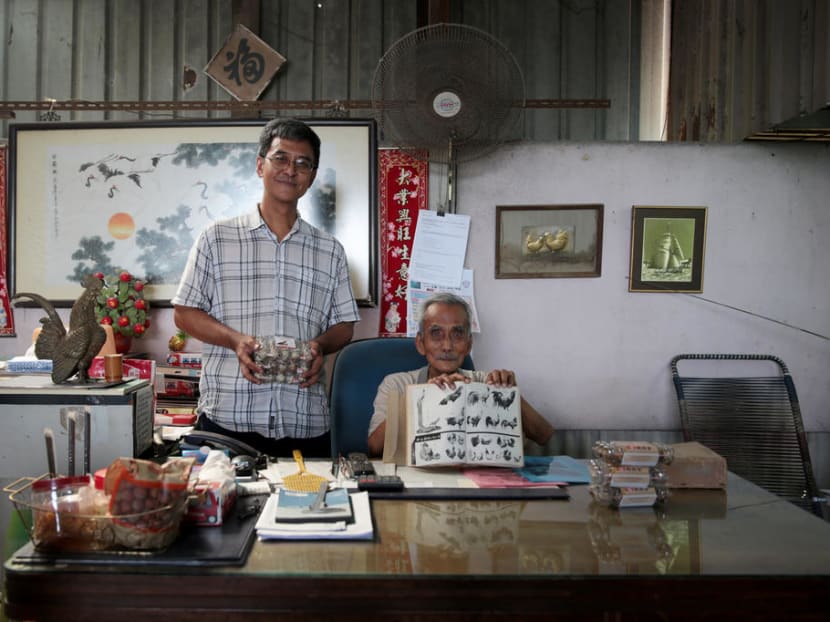Singapore’s farming revival: 'Tech is the only way to go'
SINGAPORE — Singapore’s agriculture sector is no longer what it once was. But far from being a sunset industry facing obsolescence, the sector is actually in the midst of a rejuvenation.

Opal Resources currently operates as a hatchery, selling fish and seafood produce to other small businesses like neighbouring farms. By adopting new tech solutions, it is hoping to turn the “small” fish hatchery into a “commercially-viable” fish farm.
SINGAPORE — Singapore’s agriculture sector is no longer what it once was.
But far from being a sunset industry facing obsolescence, the sector is actually in the midst of a rejuvenation, fuelled by cutting-edge science and technology, and given fresh relevance by the urgent need to boost food security amid rapid climate change.
Local farmers say they are doing their best to adopt the latest technologies to raise their efficiency and productivity, and forming collaborations with partners who can help them scale up their operations and go global.
Read also
Venture capital firms, known more for betting on the next Alibaba or Grab, are starting to get in on the action, investing in innovative agrifood tech start-ups.
While the sector is fast becoming a hive of innovation, farm operators and experts say more can be done to support its future growth: The nurturing of young Singaporeans to ensure a pipeline of agritech talent and the promotion of local produce among consumers.
SHRINKING YET GROWING
Today, the agriculture and fishing industry makes a negligible contribution to Singapore’s Gross Domestic Product (GDP). It is counted under the “Other Goods Industries” segment, which accounted for just 0.02 per cent of the Republic’s GDP in 2018, down from 0.04 per cent in 2009. (This “Other Goods Industries” segment also consists of mining and quarrying activities.)
At its peak in the 1960s, the local agriculture and fishing sector contributed to around 3 per cent of Singapore’s GDP.
“Back in the 1960s, we had sufficient local food production to feed the population in Singapore (then),” said Professor William Chen, the director of Nanyang Technological University's Food Science and Technology programme.
As Singapore rapidly industrialised in the 1970s and shifted its focus to higher-value activities in the following decades, many farms were phased out.
By 2014, agriculture made up only about 1 per cent of Singapore’s land area. This year, 62 farms will be relocating to make way for defence training grounds.
Read also
But even as the sector’s proportion of the economy shrank to practically zero, the number of farms in Singapore has actually grown slightly over the last 10 years.
According to the Agri-Food and Veterinary Authority of Singapore (AVA), there are 194 vegetable, fish and egg farms here in 2018, up from 173 in 2010.
The amount of vegetables, fish and eggs produced locally also grew.
Last year, 12,200 tonnes of leafy vegetables was grown locally, making up 13 per cent of all leafy vegetables consumed in Singapore.
This was up from 9,300 tonnes grown in 2010, which was 12 per cent of all leafy vegetables consumed here that year.
Last year, the 4,600 tonnes of locally produced fish made up 9 per cent of all fish consumed here.
This was up from the 3,200 tonnes produced in 2010, which comprised 6 per cent of total fish consumption in Singapore.
Aside from producing more, local farms are also producing more efficiently.
Read also
Fish-farming practitioners Opal Resources has teamed up with premium seafood supply chain company Oceanus Group to scale up its tech-driven operations.
The partners were recently awarded a 11,900 sqm site for food farming at Sungei Tengah, where they plan to implement a bio-floc system, a waste-water treatment technique that improves water quality while producing protein-rich feed for fish at the same time.
“These systems, by increasing stocking density… allow us to be able to grow a lot of fish (or prawns) in a small space,” said Mr Alex Siow, chief executive of the joint venture between Opal Resources and Oceanus Group.
He said that with traditional methods, one can farm only about 1kg of prawns per cubic metre of water. “But with the bio-floc system, you can do 2 to 4kg,” he said.
Currently, Opal Resources operates as a hatchery, and sells fish and seafood to other small businesses, such as neighbouring farms.
Mr Peter Koh, executive director and chief executive officer of Oceanus Group, said: “When you’re talking about commercial farming, when the place is too small and not scalable, it’s difficult to be profitable.
“(That is why) Opal teamed up with us to tender for a bigger piece of land and invest in tech to be more commercially viable.”
Mr Koh said that with the push towards tech, more of such collaborations can be expected in the sector.
Local vegetable farms are also adopting innovative solutions to increase yield.

Meod, a firm backed by public-listed company Edition, developed its own vertical growing system that allows farmers to string up crops and grow them to a height of up to 4.5m, thus maximising space.
The company has also used other innovations to track the growth of seedlings and crops, as well as the time needed for each plant to reach a certain weight and stage of growth.
Meod’s director Jeremy Chua told TODAY that these investments cost close to S$1.5million in total, some of which came through investor funding.
“However, the payback period is long”, said Mr Chua, who expects to wait about seven to eight years before he recovers the costs of the investments.
Still, he firmly believes that “tech is the only way to go”.
“Other countries are already way ahead, not so much with tech, but because they have been growing for so many years, and with scale, so they can produce at much cheaper cost.”
Tech is the only way to “leapfrog” to raise productivity levels, said Mr Chua.
Read also
In his Budget speech on Monday (Feb 18), Finance Minister Heng Swee Keat highlighted other notable innovations in the sector.
One was the St John’s sea bass, a fish bred by local start-up Allegro Aqua which is less susceptible to disease and can be bred in a third of the usual time. Another was Temasek Life Sciences Laboratory’s “Temasek Rice”, which produces four times as much rice per hectare as compared with regular breeds of rice.
Mr Heng cited these examples as encouraging signs that the agriculture sector is transforming.
After all, he noted, “in the digital age, we still need food, not just bits and bytes”.
THE NEED TO ENHANCE FOOD RESILIENCE
As climate change threatens global food supplies, food security is becoming ever more pertinent, making the drive to transform the local agriculture scene all the more urgent.
“Given our lack of natural resources such as land and water, the future of farming in Singapore has to be one that is technology and R&D-driven, climate resilient and resource efficient with high productivity,” said Minister for the Environment and Water Resources Masagos Zulkifli earlier this month, as he set out the priorities of the new Singapore Food Agency (SFA), which will be formed in April.
To this end, the Government has been encouraging the adoption of technology in the local agriculture scene.
In the recent tender for agricultural land at Sungei Tengah, the AVA awarded land to farms based on their production capability and the kind of technologies they promise to implement in their operations, even before taking into account their bid prices.
Unfortunately, the race to adopt technology is leaving some behind.
In December last year, TODAY reported that farmer William Ho may lose his decades-old quail-egg farm, after it failed to secure either of the two land parcels in Lim Chu Kang awarded by the AVA.

Meanwhile, Enterprise Singapore’s investment arm, Seeds Capital, has appointed seven partners to co-invest in Singapore-based agri-food start-ups.
Under this initiative, more than S$90 million worth of investments will go into early-stage tech startups with disruptive food and agritech solutions.
WANTED: AGRI ARCHITECTS, ENGINEERS AND ENTREPRENEURS
Farmers believe that the push to adopt technology must be accompanied by an effort to educate and encourage young Singaporeans to take up jobs in agriculture.
Kranji Countryside Association president Kenny Eng said more can be done to ensure there are skilled workers with the technical know-how to enter the field in future.
This means educating the next generation of engineers, architects and entrepreneurs to understand the value of building Singapore’s farming and food future, he added.
“(The problem is) we don’t have a farming culture here, because people don’t necessarily see farming as a viable career. But with the new tech developments, that could change,” Mr Eng said.
More can be done to educate consumers, too, on the value of locally-produced food, said Prof Chen, who added that Singaporeans might not be aware that locally-produced food can be as nutritious as imported food.
“Once consumer behaviour changes and they start buying more local food, then the market for local food products will grow, making local farm businesses viable. Then, the agriculture sector could see growth,” he said.
AVA is taking steps to raise such awareness. It has organised an “SG Farmers’ Market” in the heartlands to promote local produce.
It has also made it easier to identify local produce, with labels such as “Country of Origin: Singapore” or “Love Homegrown Produce”.






